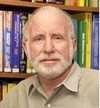System Upgrade on Tue, May 28th, 2024 at 2am (EDT)
Existing users will be able to log into the site and access content. However, E-commerce and registration of new users may not be available for up to 12 hours.For online purchase, please visit us again. Contact us at customercare@wspc.com for any enquiries.
This is the seventh set of Handbook of Porphyrin Science.
Porphyrins, phthalocyanines and their numerous analogue and derivatives are materials of tremendous importance in chemistry, materials science, physics, biology and medicine. They are the red color in blood (heme) and the green in leaves (chlorophyll); they are also excellent ligands that can coordinate with almost every metal in the Periodic Table. Grounded in natural systems, porphyrins are incredibly versatile and can be modified in many ways; each new modification yields derivatives, demonstrating new chemistry, physics and biology, with a vast array of medicinal and technical applications.
As porphyrins are currently employed as platforms for study of theoretical principles and applications in a wide variety of fields, the Handbook of Porphyrin Science represents a timely ongoing series dealing in detail with the synthesis, chemistry, physicochemical and medical properties and applications of polypyrrole macrocycles. Professors Karl Kadish, Kevin Smith and Roger Guilard are internationally recognized experts in the research field of porphyrins, each having his own separate area of expertise in the field. Between them, they have published over 1500 peer-reviewed papers and edited more than three dozen books on diverse topics of porphyrins and phthalocyanines. In assembling the new volumes of this unique handbook, they have selected and attracted the very best scientists in each sub-discipline as contributing authors.
This handbook will prove to be a modern authoritative treatise on the subject as it is a collection of up-to-date works by world-renowned experts in the field. Complete with hundreds of figures, tables and structural formulas, and thousands of literature citations, all researchers and graduate students in this field will find the Handbook of Porphyrin Science an essential, major reference source for many years to come.
Contents:- Volume 31: Synthesis — Part II:
- Porphyrin Analogs Containing Non-Pyrrolic Heterocycles
- Oligoporphyrins with One- and Two-Atom Covalent Bridges: Synthesis and Reactivity, Solid-State, Solution and Electronic Structures, Spectroscopy and Applications
- Volume 32: Materials:
- Supramolecular Organization of Porphyrins and Phthalocyanines by Use of Biomimetic Coordination Methodology
- Electrosynthesis Processes Based on Oxidative Couplings of Porphyrins for the Formation of Supramolecular Assemblies
- Photofunctions of Phthalocyanines and Related Compounds
- Nonlinear Optical Properties of Porphyrins and Expanded Porphyrins
- Spatial Organization of Multi-Porphyrinoids for Pre-Defined Properties
- Volume 33: Applications — Part II:
- Design, Synthesis, Selective Recognition Properties and Targeted Drug Delivery Application
- Phosphorescence of Triplet Chlorophylls
- Ionic Liquid-Based Chlorins and Type III Mechanism of Photodynamic Therapy (PDT)
- Porphyrins as Active Components for Electrochemical and Photoelectrochemical Devices
- Volume 34: Harnessing Solar Energy:
- Porphyrin Self-Assembly and Reactivity at Polarized Soft Interfaces
- In Situ Spectroscopic Characterization of Porphyrins at Liquid Interfaces
- Catalysis of Oxygen Reduction by Metal-Free Porphyrins in One- and Two-Phase Liquid Systems
- Supramolecular Assemblies of Porphyrin and Phthalocyanine Derivatives for Solar Energy Conversion and Molecular Electronics
- Porphyrins and Metalloporphrins as Components in Artificial Photosynthesis Research
- Strategic Synthetic Approaches to Porphyrin-Based Artificial Light-Harvesting Systems for Solar Energy Utilization
- Volume 35: Cumulative Index for Volumes 1 – 34


























